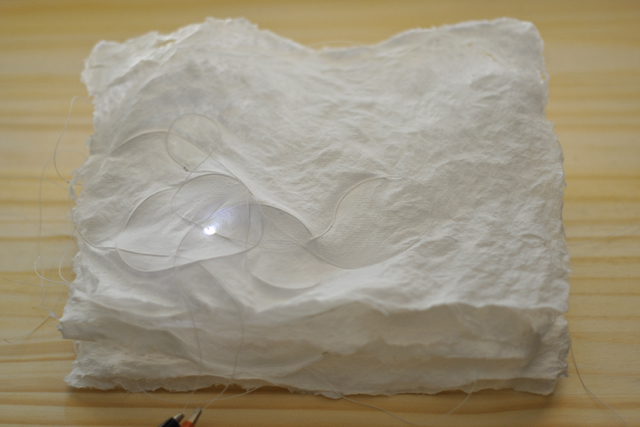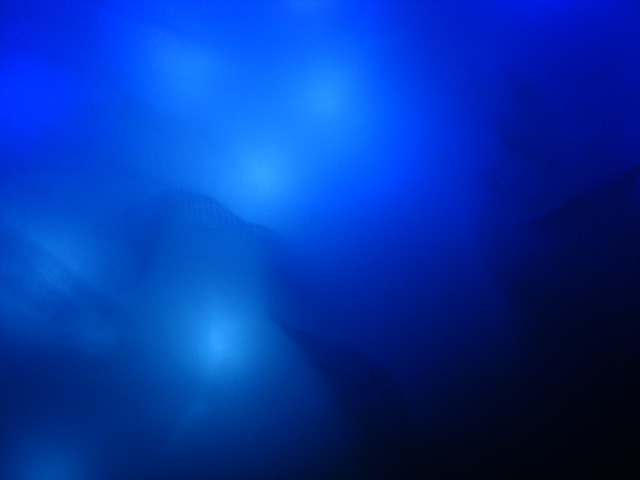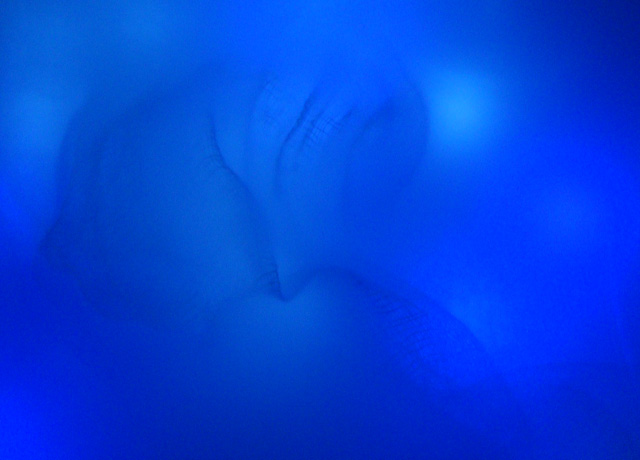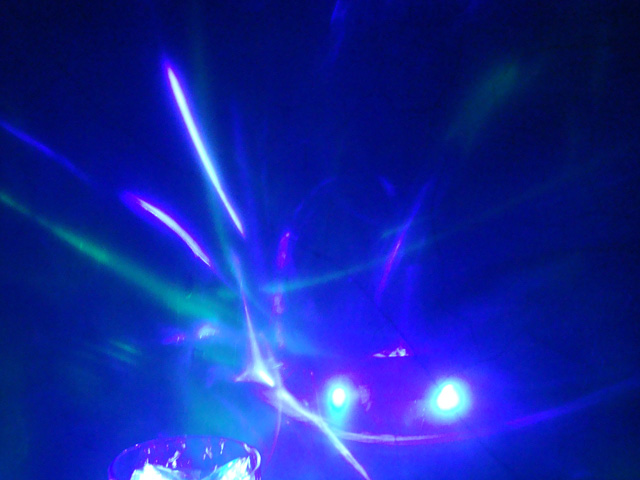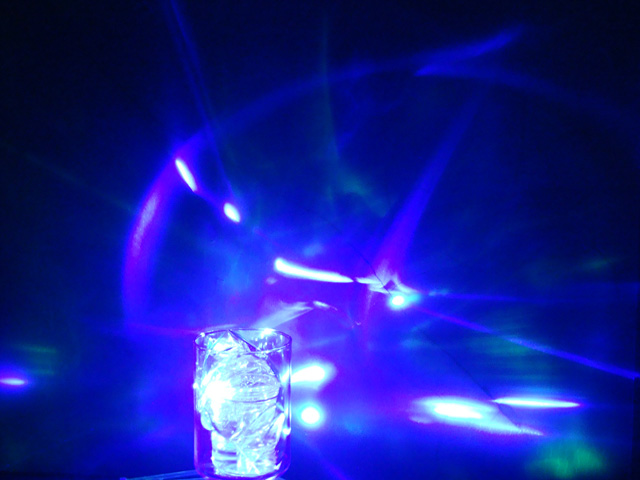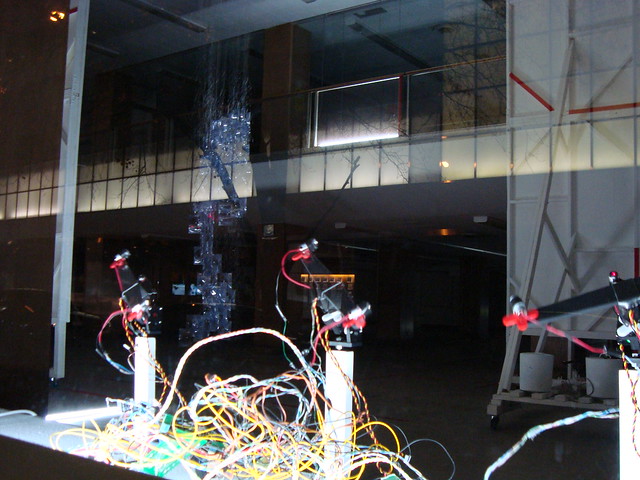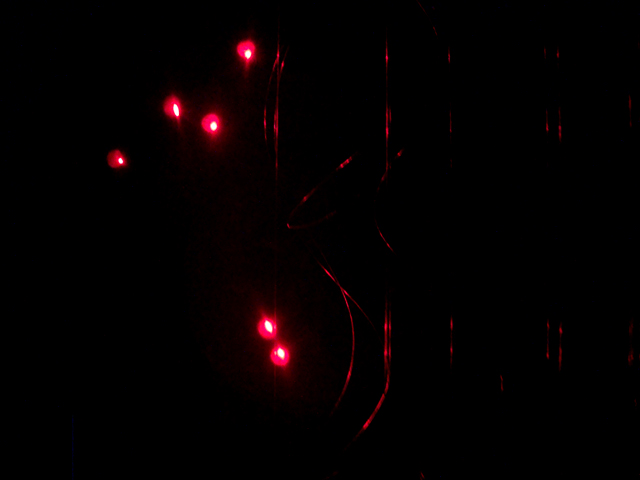robot radio/transient, set is for lea bertucci and ed bear’s ExiTrip project, more documentation on this work and others can be found on their site.
ExiTrips are functional, salvaged, obsolete iTrips (low range fm transmitters for ipods), fitted with a stereo mini-plug and battery pack. the theme of lea and ed’s project is creative re-purposing of obsolete consumer electronics. we found out about the project from free103point9 and submitted a proposal.
after noticing that walking around the Exitrips seemed to affect their transmission we decided to use the 5 ExiTrips lea and ed sent us as sensors. we were able to read each ExiTrip’s signal strength with an fm tuner chip from Silicon Industries. we used the variations to create a live audio work entitled robot radio, that was premiered within another new project entitled transient, set – both of which you can see and hear above.
each of robot radio’s ExiTrips was outfitted with a new, longer antenna sized to its selected broadcast frequency and encased in acrylic. in addition to contributing audio, the ExiTrips became a sculptural element of transient, set. in transient, set, software processed live video from a resurrected, yet glitchy iSight camera and projected the resulting two dimensional, black and white imagery through an assemblage of materials that reflected and refracted the light, providing bits of color. the long, thick, bare copper antenna’s or robot radio, the monofilament used to suspend them, and their acrylic encasements were a part of that assemblage.
the software for both works, developed in different programming languages (max/msp w/arduino for robot radio, processing for transient, set), used similar logic, that involved processing input data and developing patterns in response to it. the programmatic consistencies between the works created shifting perspectives on their relationship from those of alignment (one work) to separation/individuation as qualities of the works changed in response to environmental conditions, including the movements and location of visitors on site.
**this may be obvious but “robot radio” will sound quite differently depending on what you’re listening to it through.
we posted some images on our flickr pages. for more info about this and other ExiTrip projects please visit the exitrip homepage. for our detailed project description go here.
